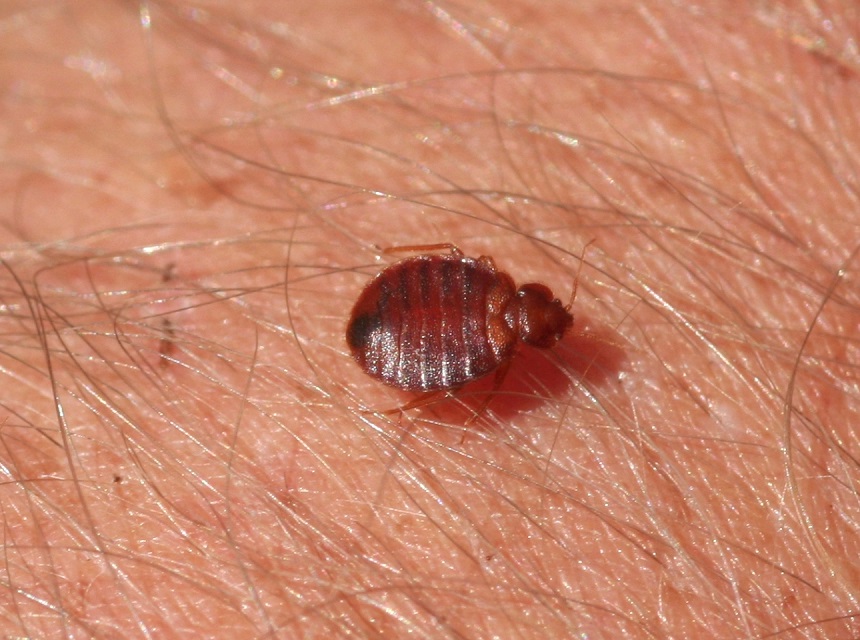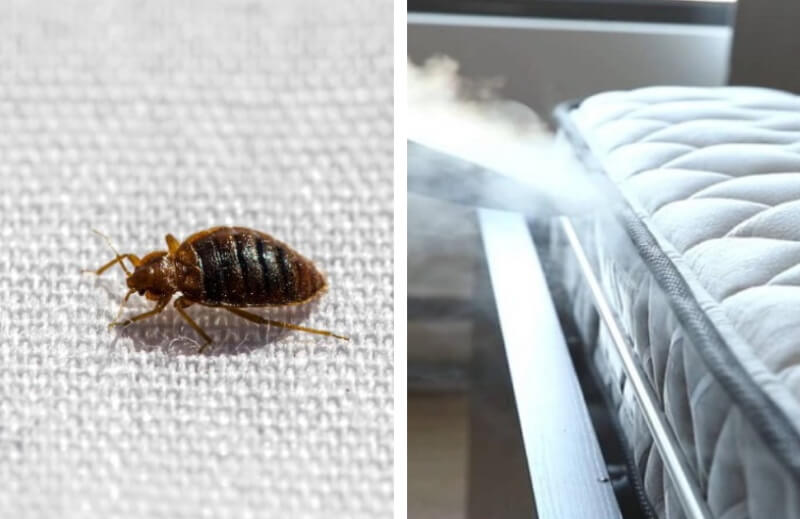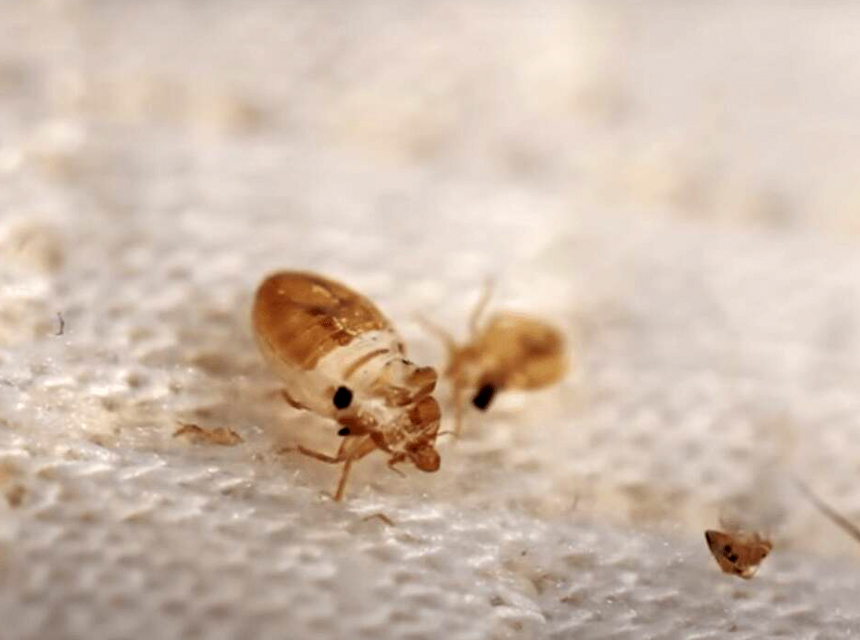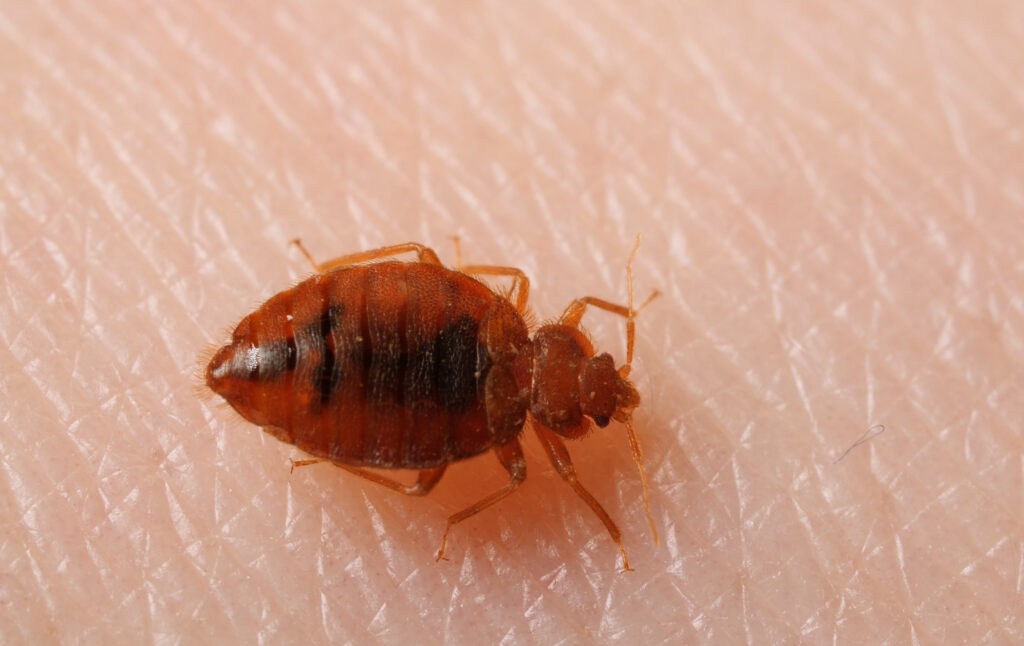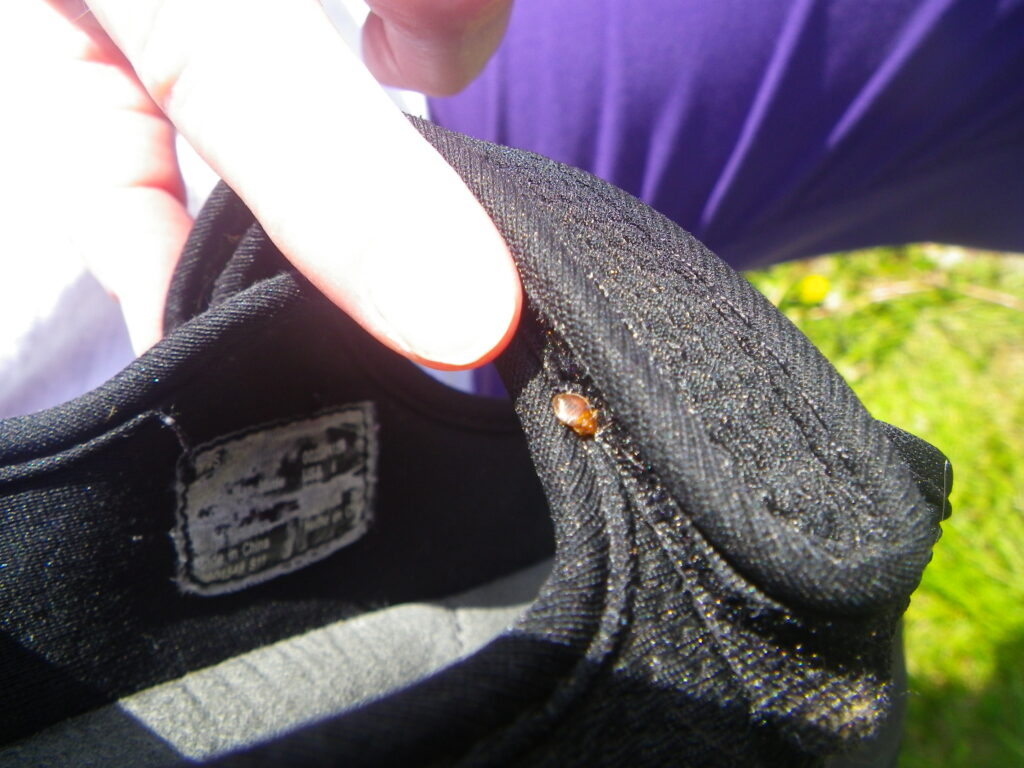

Do you think you have bedbugs and want to know how to spot them? Then, the first question you’re asking is, how big is a bed bug?
The size of bed bugs basically depends on two factors: the stage of development and the food intake. Bed bugs go through five stages of development Trusted Source Bed Bugs Appearance and Life Cycle | US EPA Identify these bugs accurately, from egg to nymph to adult. Adults are about the size of an apple seed, brown and oval-shaped, and either flat or balloon-like depending on how recently fed. Nymphs are a bit smaller and translucent or whitish yellow. www.epa.gov as nymphs before becoming adult bugs. The eggs are 1 millimeter (0.04 inches) long. When they hatch, the first nymphal instar appears. Nymphs are like adult bedbugs but much smaller in size and sexually immature.
The first nymphal stage is 1.5 millimeters (0.06 inches) long, somewhat larger than the eggs. After hatching, the nymphs’ only ambition is to feed. They feed exclusively on blood, showing a special predilection for human blood. Nymphs require a complete blood draw to move to the next nymphal stage, which they reach after a molt.
By reading further, you’ll discover here the practical advice to understand what bedbug looks like, how big are they so you can identify them!
What does the bed bug look like to the naked eye? How big is a full-grown bed bug? How do you recognize them? Discover here the answers!
The adult bed flea is reddish-brown with an oval, flattened body. The bedbug is an insect visible to the naked eye. It does not fly, as it has no wings and moves by walking quickly, but not enough to escape the sight of a keen observer. It has microscopic hairs which give it a slightly striped appearance.
A bed bug looks like a lentil after cooking. Its characteristic flattened shape allows it to slip into crevices the size of a credit card thickness. On the other hand, after its meal, once the bug is engorged with blood, it looks like an apple seed.
In size, the adult bedbug is about 5 mm long. The nymphs are translucent and lighter in color. As it becomes an adult, it becomes darker and darker and opaque. In adulthood, it is often compared to a lentil or an apple seed. The pupa is the same shape as the adult, but it is yellow-white.
The bedbug measures between 5 and 7 millimeters (0.2 to 0.3 inches). It’s not very big, but it’s good enough for you to spot it with the naked eye! A bed bug, therefore, has the same length as a grain of rice, the head of a small screw, an apple seed, or a pinhead.
However, note that this varies depending on the age of the bedbug and its stage of growth.
The bedbug has an oval, broad and flat body and a small enlarged head. Brown and wingless, an adult bug looks like an apple seed. After biting and sucking blood, it swells slightly and takes on a blood-red tint.
The bites of bedbugs are often painless and leave red marks on the skin like a mosquito bite. Sometimes they are itchy, which can disrupt sleep.
Small, but potentially irritating, in one night, it can sting us more than 90 times. The bug locates its victim in part by the heat it gives off.
This bug not only parasitizes humans but also birds and mammals. Bedbugs are not known for transmitting diseases Trusted Source CDC - Bed Bugs - Frequently Asked Questions (FAQs) Frequently asked questions about bed bugs. www.cdc.gov , according to the CDC. To date, these insects do not seem to be the vectors of known diseases. However, the itching they cause can be annoying and can cause the chance of having secondary infections.
Bed bugs go through different stages of development before becoming adult bugs. The larval state is only a succession of intermediate stages before reaching adulthood. The three most significant stages of their development are explained below:
The bedbug will begin its life cycle as an egg. The bed bug is then almost invisible to the naked eye. The size and color of the eggs (which are small, transparent microscopic piles of rice) make them very difficult to identify.
The bed bug egg is indeed around a millimeter long and half a millimeter wide! Whitish in color and generally well hidden, the egg is usually only found when looking for it and paying close attention.
The bedbug then moves to become a larva. The size of the bug here will vary between 1.5mm to 4.5/5mm (0.06 inches to 0.2 inches). The larvae, which are mobile and a little larger, are more “easily” identifiable when inspecting the corners of your home. At the larval stage, it is still impossible to distinguish a male bug from a female. In addition, only adult bedbugs can lay eggs and reproduce.
At the end of 6 weeks, the bedbug will pass to the adult stage, being able to reach 6 to 7mm (0.2 to 0.3 inches). A female in adulthood only needs to reproduce once and then she lays 4 to 5 eggs per day for several weeks, or even months.
Once laid, bedbug eggs will take about 6 weeks to mature into adults who are also capable of laying eggs. To develop, the bedbug will eat what it finds next to it, i.e. you, as it feeds on human blood.
Depending on their stage of development, the size and color of bedbugs vary from a sesame seed to an apple seed.
Unfortunately, during a recent infestation equivalent to less than 6 weeks, it is very difficult to validate the presence of bedbugs and their nests despite the persistent bites, which are the first visible symptom on you.
Indeed, when the infestation begins, the bugs are few in number and well hidden, so it is extremely complex to flush them out. Most of the time the first traces are visible after 6 to 8 weeks.
If in doubt, the easiest way may be to call in a specialist handler who can identify the presence of bedbugs.
After feeding on blood, adult bed bugs swell and increase in size. They go from being dorso-ventrally compressed insects to having a rounded or oval body. Thus, a newly fed adult bed bug can grow to be up to 10 millimeters (0.4 inches) long after feeding, thereby doubling its body size. For those who want to know how big a bed bug is in inches, it can get up to 0.25 or 1/4 inches in length, according to the EPA.
In comparison, bed bugs look most similar to fleas. However, fleas are a lot smaller. They usually measure 1.5 to 3 millimeters (0.06 to 0.1 inches) in measurement.
Bed bugs are also similar to carpet beetles. However, the latter have round and oblong shapes, don’t feed on blood, and are usually not longer than 3 millimeters (0.1 inches).
Adult mites are also similar to bed bugs. However, these can be found in the head of their hosts but are two to three millimeters (0.08 to 0.1 inches) long.
When inspecting your home, you may be able to identify live or dead bed bugs. If this is not the case, bed bugs leave different traces that you might spot around your beds and sofas.
Molting remnants, which look like small empty beige brown shells are 2 to 4 mm (0.08 to 0.16 inches) long. Bedbugs produce droppings in the form of small, dark spots that look a lot like the spots made by a fountain pen that you shake.
If you’re worried about them, you can get and use bed bug traps. A safer alternative however is the bed bug repellent. One of the best sellers that can be purchased online is the EcoRaider 16 oz Bed Bug Killer. It’s a fast and sure killer that is formulated from natural and non-toxic ingredients. It’s, therefore, child- and pet-friendly.
Meanwhile, if you have an infestation from multiple bugs, say, ticks, fleas, and bed bugs, you’ll need a more multifaceted approach. For this, one of the most recommended and purchased is the Ortho Home Defense Max. It’s a bed bug, tick, and flea killer that kills both eggs and insects. Another option is applying pressured steam on the bugs. Getting a good steamer for bed bugs will be a great choice.
When bed bugs bite, there are usually three to four bites in a straight line or grouped in one place on the skin. The bites are most often on the exposed parts of the arms, legs, and back. However, the individual’s sensitivity can determine, the reaction. The bites can disappear after some hours or a few days. For others, they may not know they have been bitten and will not see bites. Others may also have a localized and immediate allergic reaction. This can be in the form of itchy and painful blisters in a bright color. In this case, you should not scratch it or you risk having serious infections.
As we mentioned, the adult bedbug is quite easily noticeable. However, keep in mind that in the form of an egg or even at the stage of a larva, it will be more difficult to recognize it.
So, you’ve seen how big is a bed bug? The young bedbug, more commonly known as the bedbug larva, measures between 1.5 and 4 millimeters (0.06 inches to 0.16 inches) in length.
Be careful, even as a larva, the bedbug bites and feeds on human blood – this is how it ensures its growth. Note also that the larva stage is relatively long (it goes through 5 phases) and a bedbug takes an average of 4 months to reach its adult size!
You may not have seen a bedbug, or very few, but they still have a real infestation in the works! Be careful, however, as a small bedbug can become an adult – and reproduces at the same time.
